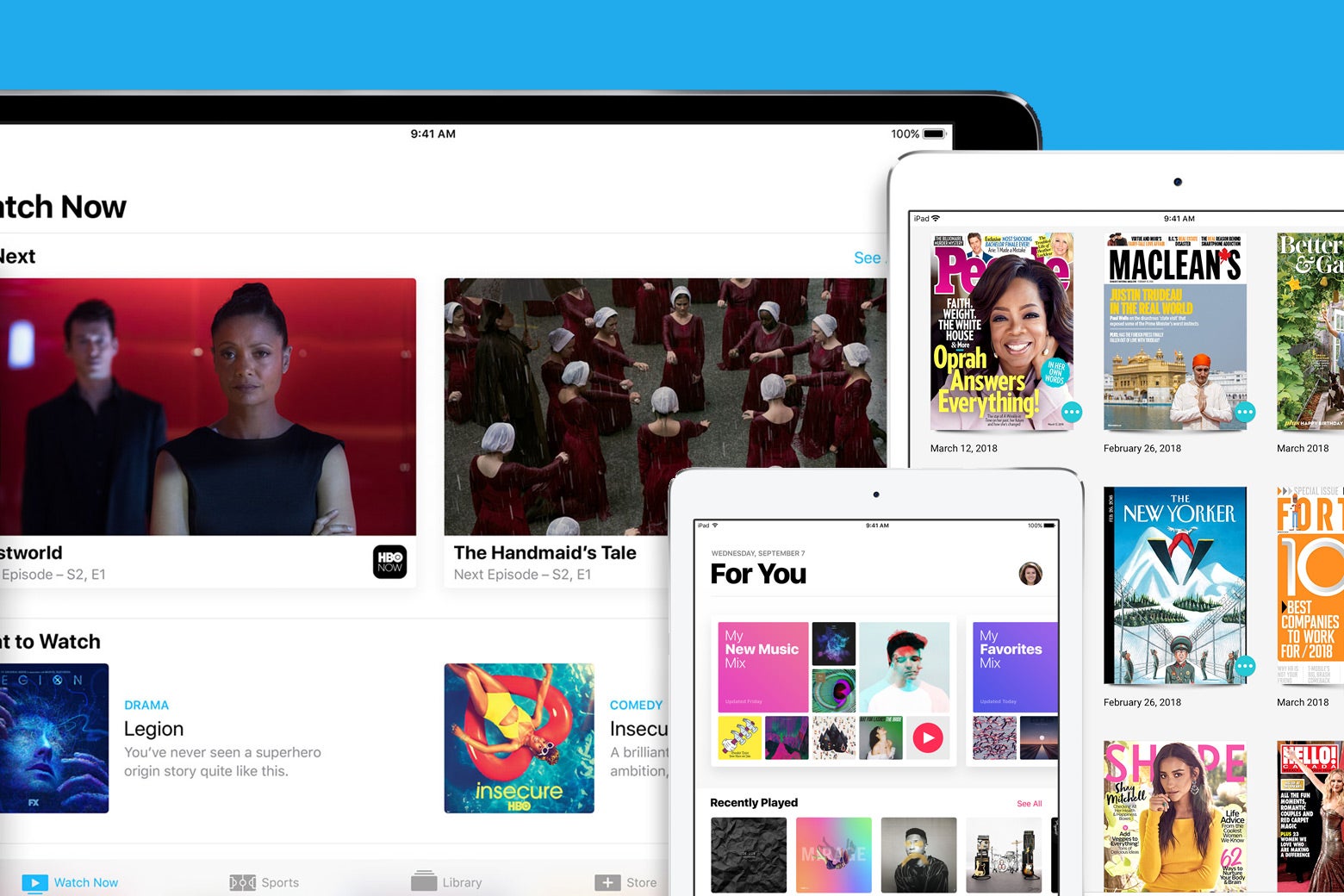Since launching Apple Music in 2015, Apple has slowly expanded its streaming and subscription media ambitions. The company acquired Texture, the “Netflix of magazines,” in April, and has been gobbling up the rights to a variety of TV series and movies for months. While we may not see the fruits of its video ambitions for some time—its 12-plus projects reportedly aren’t set to debut until mid-2019—we might have a better sense of how we’ll get access to all this new on-demand content. According to a report by the Information, Apple is considering a streaming bundle pulling together its TV, music, and news offerings.
“Such an ambitious offering would bear some similarity to Amazon’s Prime service, which spans video, music and some news,” the Information reports. “Yet it would be sharply different from many other subscription media services, which tend to be focused on one specific entertainment area.”
A bundled media subscription like this is good news, both for Apple device owners and for Apple itself. For consumers, it provides a simplified way to gain access to Apple’s streaming and media content. Right now, all of Apple’s services—iCloud, Apple Music, iTunes—are separate subscriptions or purchases. Having to manage additional news or magazine subscriptions and streaming video subscriptions on top of its existing options could become a logistical headache. A media bundle like this is also typically cheaper than purchasing a subscription of each separate service individually, and depending on how frequently it’s used, could provide greater value for consumers.
For Apple, such a bundle is beneficial from a market penetration perspective. In the most recent publicly available stats, Spotify still leads Apple Music in the streaming music space, although Apple Music’s strong growth rate has quickly been closing that gap. A bundled offering could help Apple’s music streaming service gain valuable new subscribers. The move could also help Apple gain additional revenue as consumers hold onto their iPhones for longer than they used to. Apple’s services business has been hitting record revenue levels in recent quarters, and another subscription offering such as this could help boost those numbers even higher. It could create another benefit as well: Apple’s HomePod sales have been lackluster so far. Many reviewers criticized the device for only natively supporting Apple Music as a streaming music player. But if new Apple Music subscribers enter the fold thanks to this purported streaming bundle, it could be the first step in luring them toward devices such as HomePod.
There are still questions about this streaming bundle—particularly with regards to the video component. Apple already offers music and TV downloads through iTunes. Will this subscription service be exclusively for new Apple-produced content (which includes a drama starring Jennifer Aniston and Reese Witherspoon and a Shark Tank-like show called Planet of the Apps), or will Apple take an approach akin to HBO or Netflix, offering a changing selection of licensed movie and TV content for subscribers to access as well? The latter could eat into iTunes purchase revenue but could also entice iOS device owners who wouldn’t otherwise pay for video downloads to pay for it on a regular basis. If Apple follows through with a unified subscription plan, it’ll a smart move. The last big question left is, simply: When are we going to be able to start streaming all this stuff?
